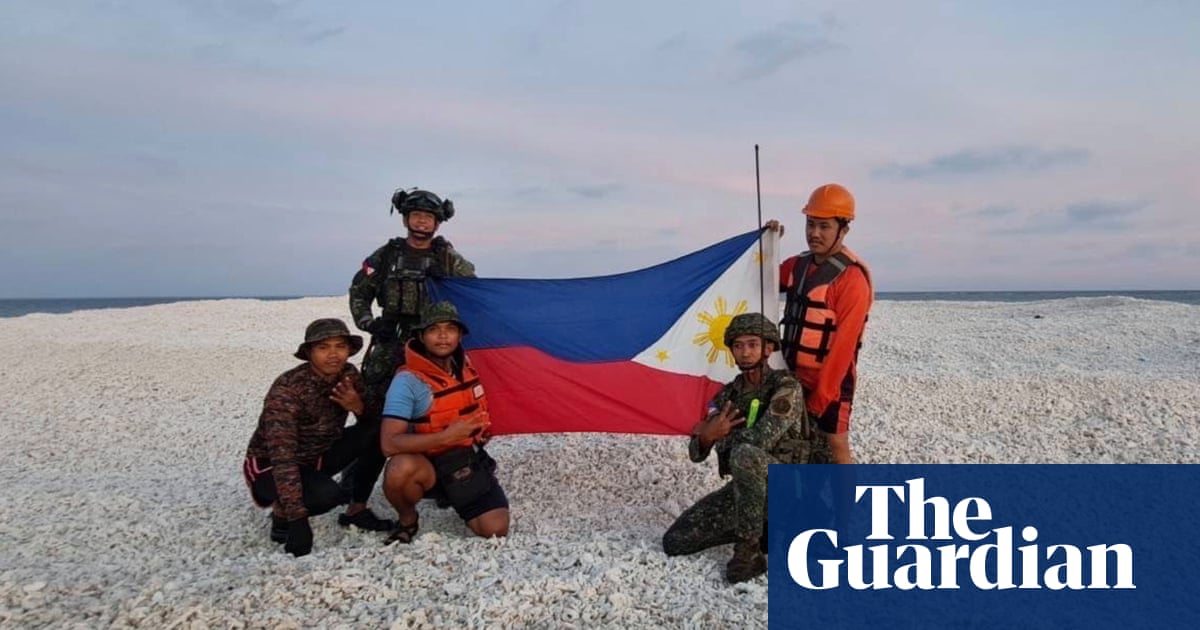South China Sea: Flags Fly High on Disputed Sandbank – A Rising Tide of Tension?
The South China Sea, a vital waterway teeming with resources and strategic importance, remains a flashpoint of geopolitical tension. Recent reports of increased flag-planting activity on a disputed sandbank highlight the ongoing struggle for control in this volatile region. This escalation raises concerns about potential military conflict and underscores the urgent need for diplomatic solutions.
A Contested Claim:
The sandbank in question, the name of which is intentionally omitted to avoid further inflaming tensions (and as the specific location is often disputed depending on the source), is claimed by multiple nations, including China, Vietnam, the Philippines, Malaysia, and Taiwan. Each nation asserts its sovereignty based on historical claims, geographic proximity, and interpretations of international law. This overlapping of claims creates a volatile situation ripe for miscalculation and conflict.
The Significance of Flag-Planting:
The act of planting flags, seemingly a simple symbolic gesture, carries significant weight in this context. It's a powerful statement of territorial assertion, potentially escalating tensions and challenging the existing, albeit fragile, balance of power. It also serves as a direct challenge to the claims of rival nations and could be interpreted as a provocative act, increasing the risk of military confrontation.
International Law and Regional Tensions:
The ongoing disputes are complicated by conflicting interpretations of the United Nations Convention on the Law of the Sea (UNCLOS). While some nations argue their claims are supported by UNCLOS, others dispute these interpretations. The lack of a clear, universally accepted legal framework exacerbates the situation, leaving room for conflicting narratives and aggressive actions.
Potential for Escalation and the Path Forward:
The recent flag-planting incident underscores the precariousness of the situation. While direct military conflict remains a concerning possibility, the potential for accidental clashes or miscalculations remains a significant risk. The international community must actively engage in de-escalation efforts and promote dialogue between the involved nations. This requires a multifaceted approach:
- Strengthening diplomatic channels: Open communication and negotiation are crucial to finding peaceful resolutions.
- Promoting adherence to international law: Reinforcing the importance of UNCLOS and other relevant legal frameworks is essential.
- Encouraging regional cooperation: Collaborative efforts on resource management and maritime security can foster trust and reduce conflict.
- Increased transparency and communication: Open sharing of information regarding military activities can help prevent misunderstandings and accidental incidents.
The Road Ahead:
The South China Sea remains a complex and volatile region. The recent flag-planting incident serves as a stark reminder of the precarious balance of power and the urgent need for peaceful conflict resolution. A failure to address these issues effectively risks further escalation, potentially leading to significant regional instability and global consequences. The international community must work collaboratively to find a sustainable and peaceful solution, prioritizing diplomacy and adherence to international law. Only through concerted and sustained effort can the region move toward a more secure and prosperous future.
Keywords: South China Sea, Disputed Sandbank, Territorial Dispute, Geopolitical Tension, UNCLOS, Flag Planting, China, Vietnam, Philippines, Malaysia, Taiwan, International Law, Regional Security, Maritime Conflict, De-escalation, Diplomacy
(Note: This article avoids naming the specific sandbank to avoid contributing to further inflammatory rhetoric. Specific location details, if deemed crucial for context, should be carefully sourced and presented with caution.)

